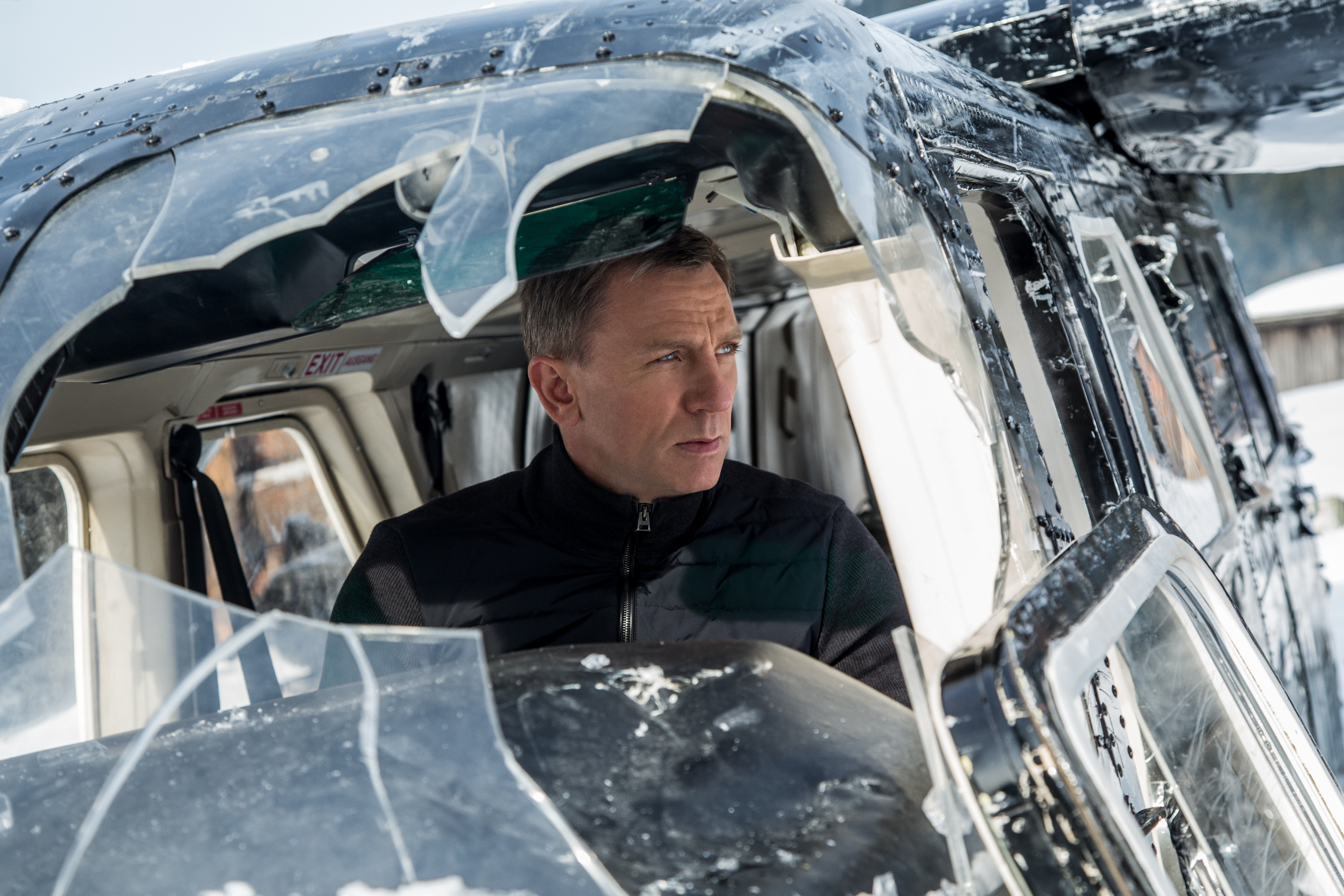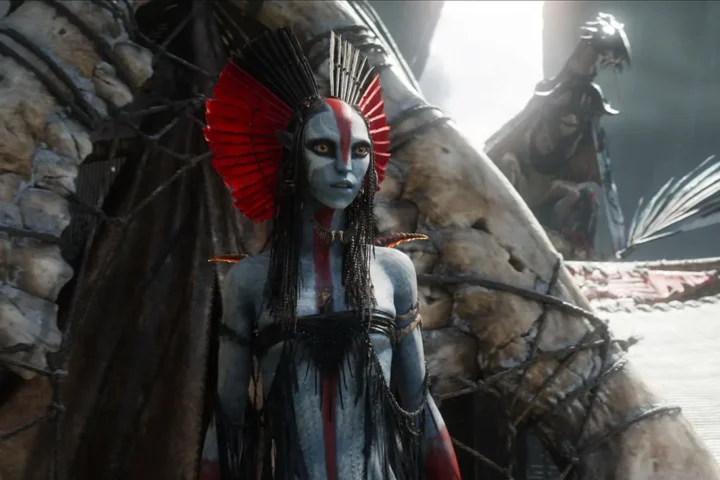SPECTRE, the 24th official James Bond picture, has the same director, writers and star as 2012’s series high watermark Skyfall, but that’s where similarities end. Watching this often entertaining movie, it’s best to put that superlative outing out of one’s mind and enjoy lesser SPECTRE for what it is—a slick, glossy spy thriller—rather than for what it isn’t—coherent, original or all that interesting in its many narrative contrivances and retrograde Bond.
For all the panache on display in the new film’s cheerfully outlandish action sequences, SPECTRE is largely familiar, through-the-motions territory that checks off its boxes—beautiful women, exotic locations, shadowy operatives bent on both world domination and personal vengeance—but does little to advance the series. It would probably be kind to call SPECTRE nostalgic, fun as it sometimes goes.
Returning director Sam Mendes opens SPECTRE with a spectacularly staged, long-take mounting of Mexico City’s famed the Day of the Dead celebration, as Bond scales rooftops and dodges collapsing buildings, culminating in a deliriously fun helicopter sequence above cowering crowds of skeleton-costumed revelers.
Turns out an obscure message from sorely missed Judi Dench’s late M has sent Bond to Mexico on the hunt for a mysterious assassin, then off to Rome where he saves the life of his victim’s widow (Monica Bellucci), who provides intel (really?) on SPECTRE, a clandestine cabal of international criminals, or something like that, which may have a connection to Bond’s own unresolved past.
Back in London, the 00 program is being dismantled in favor of an international intelligence cooperative, and the usual team, led by Ralph Fiennes’ M, Naomie Harris’ Moneypenny and Ben Whishaw’s Q alternately cover for, keep up with and admonish Bond’s exploits.
Bond’s mission to unravel SPECTRE leads him to longtime foe Mr. White (Jesper Christiansen, returning) and then to White’s daughter Dr. Madeleine Swann, played with regal glamour and brainy pluck by a knockout Lea Seydoux. Even if the screenplay incongruously tells us she’s tough while reductively making her a yesteryear damsel in distress, Seydoux is a formidable presence. Best known to American audiences as the blue-haired, love struck lesbian from 2013’s provocative Blue is the Warmest Color, it is a pity she isn’t given more to do, because like Rebecca Ferguson in last summer’s solid Mission Impossible: Rogue Nation, she really has the goods.
All of this leads to the film’s final half hour revelations where Bond and Swann meet villain Franz Oberhauser, played by the great Christoph Waltz, largely wasted here as a generic megalomaniac hiding in a desert meteor crater who pauses briefly from punishing Bond with needle-induced psychotropic torture to explain just why 007 is the object of his lifelong obsession. In just one of a series of excessive devices, Oberhauser’s real name turns out to be…Blofeld. It’s all very contrived in the way that most modern action pictures are—all machinations, reversals and mask pulling—and that does SPECTRE the disservice of diminishment in its denouement.
Perhaps more fun is secondary villain David Bautista as Hinkx, a hulking menace not unlike Richard Kiel’s man-beast Jaws, and one who provides a terrifically fun throwback, knuckle-to-knuckle combat scene in a speeding train car, a sequence serving as foreplay for an energetic coupling between Bond and Swann, who it should be noted order dirty martinis directly before—not shaken, not stirred.
Technically confident and well-paced, it’s tempting to overlook SPECTRE’s problems, notably a needlessly overwritten final act with a series of unnecessary revelations—all villains from the last three outings are linked and the agenda is very personal vendetta against Bond himself, culminating in a wholly unbelievable origin story—making Waltz’s villain a mere tool of overly ambitious plotting.
Much ballyhoo has been made about fifty-one-year-old Bellucci’s glorified cameo as a Bond woman—not a girl—and I suppose this marks the first time 007 has been paired with a woman near his own age. Craig and Bellucci have solid chemistry, but their momentary fling is a throwaway that merely intimates real intimacy. Bellucci, talented as she is, is used here as merely eye candy in lingerie and heels, though their seduction contains clever bits of physical choreography.
In my book, Craig is the series’ best Bond, and while the star’s anxiousness to complete his contractual commitment to the series is no secret, you wouldn’t know it from his smart, tough, muscular performance. More than any other Bond, his incarnation is the bluntest of instruments, all viscerally physical command. But as Craig has demonstrated in Casino Royale and Skyfall, as well as scores of other roles, he is an emotionally nuanced actor capable of going there when required, something SPECTRE somewhat short-shrifts.
Yet the lavishly expensive (nearly $300m) picture is stylish, well acted and skillful in its sequences, exceedingly well scored by Thomas Newman, who really deserves credit for pushing the melee along with aural ferocity. Perhaps what helped elevate Skyfall into the realm of real cinema was Roger Deakins’ shimmering cinematography, and SPECTRE DP Hoyte Van Hoytema (Interstellar), who can shoot an action sequence like nobody’s business, doesn’t quite match the heights of his predecessor.
Sam Smith’s much-maligned opening theme song, Writing’s on the Wall, is actually a lovely, falsetto sung non-Bond number, and the credit sequence of naked women ensnared by octopus tentacles is high-order sensuous.
SPECTRE is solid action moviemaking and middling Bond, yet worth seeing for Craig, Seydoux and some terrific action sequences.
3 stars.



